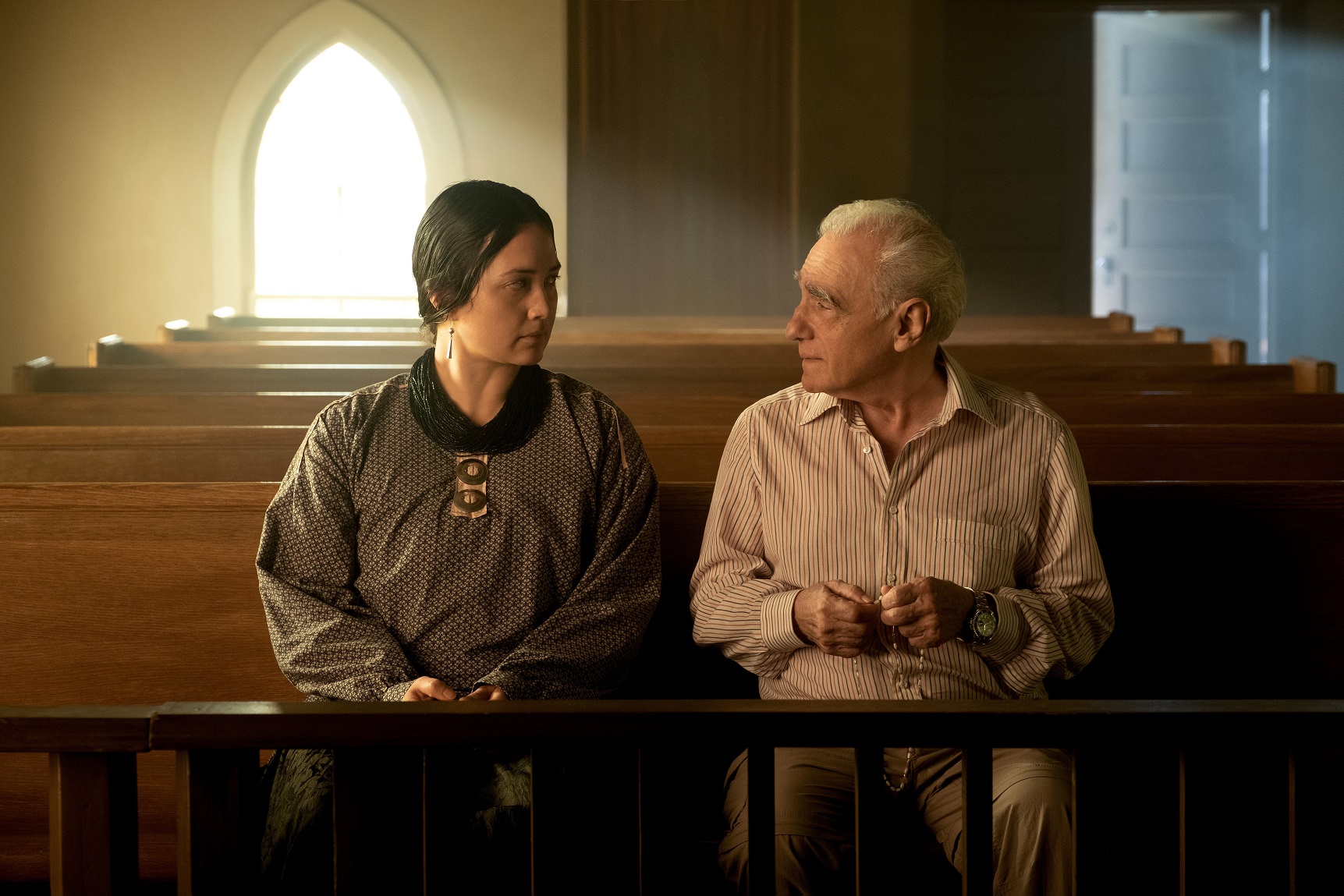
Martin Scorsese’s rather magnificent Killers of the Flower Moon is days away from cinemas, and its arketing campaign has been fascinating to observe. What was initially pitched as a Leonardo DiCaprio-starring period crime epic has been repositioned to emphasise its story of atrocities brought against the Osage Nation. The presence of Lily Gladstone, the film’s superb indigenous star, has been elevated. It was recently announced she’ll campaign for the best actress Oscar, not supporting, while Scorsese has admitted the script was rewritten during filming to centre its Native American characters: "After a certain point, I realised I was making a movie about all the white guys," he told Time magazine. No more.
Consider it the latest step in Hollywood’s evolution regarding the representation of Native Americans on screen, a century or so after indigenous characters mainly served as target practice for white cowboys in dime-a-dozen Westerns. One need only trace John Ford’s career to see how it gradually dawned on the industry that this might not be good enough. Whereas his 1939 white settler saga Drums Along the Mohawk made a plainly villainous obstacle of Native American warriors, 1956’s more poetically conflicted The Searchers ascribed a human motivation to their violence, while his final film, 1964’s ravishingly shot Cheyenne Autumn, was an overt mea culpa on Ford’s part — a sympathetic reflection on colonial abuses, albeit one that still put white saviours front and centre.
For several decades, that would remain the industry’s default compromise on the subject, from Arthur Penn’s sprawling, semi-parodic Western Little Big Man (1970), tracing more than a century in the life of a white man (Dustin Hoffman) raised by the Cheyenne Nation, to the lively but rather naive action film Billy Jack (1971), with its half-Navajo Vietnam vet hero and oddly violent plea for peace.
Windwalker (1981), a stately, heroic portrait of a veteran Cheyenne warrior, commendably features mostly Cheyenne and Crow dialogue but bizarrely casts British actor Trevor Howard in the title role.
The apex of this movement, of course, remains Kevin Costner’s Oscar-sweeping smash Dances With Wolves (1990), about a United States Civil War soldier integrating with a Lakota tribe. It doesn’t get spoken of much these days (and strangely), in part because well-meaning grasps at representation look rather dated.
Its success prompted a rush of revisionist ’90s reckonings with Native American culture from white film-makers, including Michael Mann’s roaring The Last of the Mohicans, with Daniel Day-Lewis as adopted Mohican hero Hawkeye; Walter Hill’s underrated historical biopic Geronimo, which went further than most by actually casting the excellent indigenous actor Wes Studi as the eponymous Apache leader; and Michael Apted’s intriguing neo-noir Thunderheart, with Val Kilmer as a part-Sioux FBI agent investigating reservation murders. South African director Jonathan Wacks had a Sundance hit with Powwow Highway, a vibrant, good-humoured road movie about two Cheyenne men reconnecting with their heritage. Disney got in on the act with its politically romanticised but indigenous-positive Pocahontas; a decade later, Terrence Malick told the young woman’s story with rather more visceral beauty, and a remarkable performance by Q’orianka Kilcher, in The New World.
Hollywood has, however, been slower to embrace stories directly from Native American film-makers — one reason why Smoke Signals — a wry, gentle character study by Cheyenne-Arapaho director Chris Eyre, in which two young men spar over differing conceptions of their "Indian" identity — was hailed as something of a phenomenon in 1998. Eyre went on to produce Imprint, a compelling drama about a Lakota lawyer (a fine Tonantzin Carmelo) evaluating herself as she works a local murder case. But few have broken out since: the recent, ribald sitcom Reservation Dogs, from Taika Waititi and indie Native American film-maker Sterlin Harjo, has filled a glaring pop-culture gap.
Outside directors have recently brought a more empathic perspective to Native American subjects. Chloe Zhao’s Songs My Brothers Taught Me and The Rider brought an elegiac ache to their portraits of reservation life, while Kelly Reichardt’s wonderful Certain Women introduced us to Gladstone — and, in her queer rancher character, a modern view of indigenous femininity.
Old habits endure: Taylor Sheridan’s otherwise gripping Wind River once again centred the perspective of white authorities in a story of Native injustice, while I have mixed feelings about Bone Tomahawk, a vastly entertaining, rip-roaring Western that rests provocatively on savage native stereotypes. Still, it increasingly feels there’s no going backwards: Scorsese speaks for many. — Guardian News & Media












